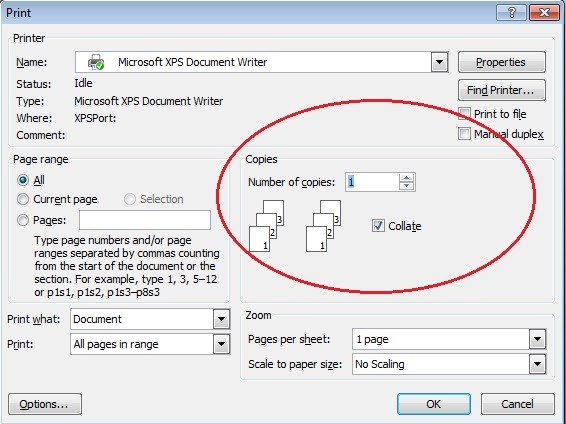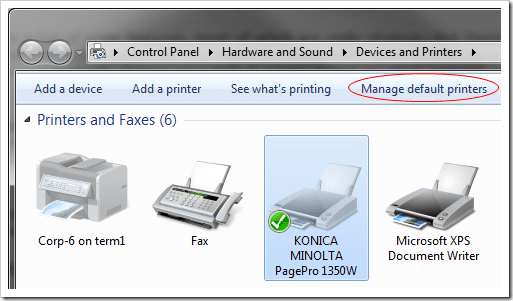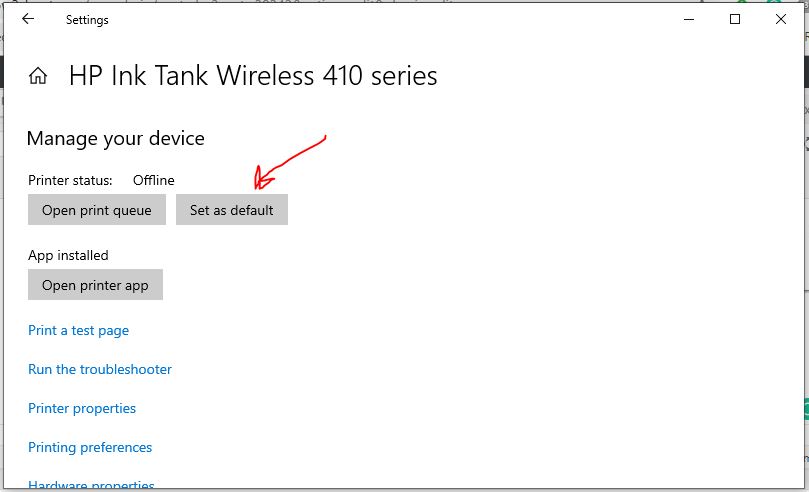
On the resulting Configuration dialog, find the MS_DGNLIBLIST variable and note the paths it contains.įrom the following list, determine the file name appropriate for your version and look in the paths specified in the MS_DGNLIBLIST variable to find it. Select Workspace > Configuration from the main pull-down menus along the top of the application. Steps to Accomplish Determine the name and location of the DGNLIB file
#CHANGE PRINTER DEFAULT SETTINGS HOW TO#
This article also describes how to set the default print settings to be used with File > Print and Project Publisher. Therefore it may be better to simply modify the supplied DGNLIB file as described in this document when it comes to tweaking the default print settings. While a custom DGNLIB file would keep customizations separate from the installed files, there is no way to export a print style, so the custom print style would have to be created from scratch. See Customizing the Interface - V8i for details on creating a custom DGNLIB file. It is also possible to create a print style in a custom DGNLIB file instead of modifying the supplied “promise” print style. Make desired changes to the "promise" print style, then save the print style and DGNLIB file.

Changing the default print settings so they do not need to be tweaked for each print session is a matter of modifying this “promise” print style.ĭetermine the name and location of the DGNLIB file that contains the “promise” print style.

The default print settings used by the Plot Page(s) tool are loaded from the “promise” print style that is stored in the. If you are using Word 2016 for Mac, go to /Users/ username/Library/Group Containers/ (MicroStation), Bentley Substation In the Open dialog box, browse to the folder that contains the Normal.dotm file. If you open Normal.dotm from the Finder, Word will create a new blank document based on the template. To make changes to Normal.dotm, you must open the file from Word. You can customize the Normal template and change default settings for many aspects of a document, such as text formatting, paragraph formatting, document formatting, styles, text, pictures, AutoText entries, and keyboard shortcuts. On the Format menu, click Document, and then click the Layout tab.Ĭhange other default settings in the Normal template For example, the layout attributes for new blank documents are based on the Normal template. On the Format menu, click Document, and then click the Margins tab.Ĭhanging the default layout in any template means that the section breaks, headers and footers, and other layout attributes are used in every new document that is based on that template. For example, the margins for new blank documents are based on the Normal template. Make any changes that you want, and then click Default.Ĭhanging the default margins in any template means that the margin settings are used in every new document that is based on that template.

On the Format menu, click Font, and then click the Advanced tab. Open the template or a document based on the template whose default settings you want to change. For example, the character spacing for new blank documents is based on the Normal template. Changing the default font also changes the Normal style, which affects any other style that is built on the Normal style.Ĭhanging the default character spacing in any template means that the settings for scale, spacing, position, kerning, and other typographic features are used in every new document that is based on that template. Note: Most of the styles in Word are based on the Normal style.


 0 kommentar(er)
0 kommentar(er)
